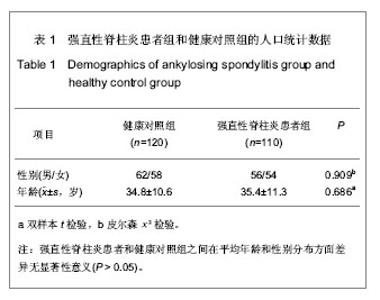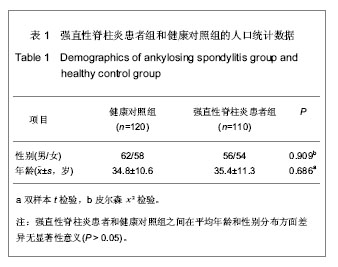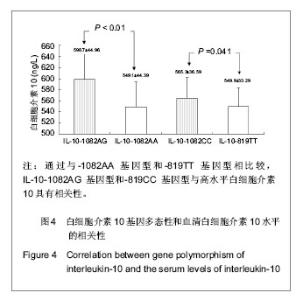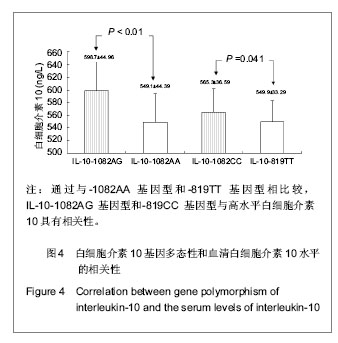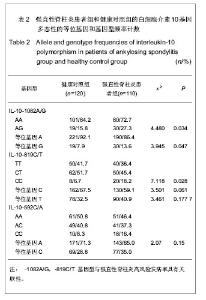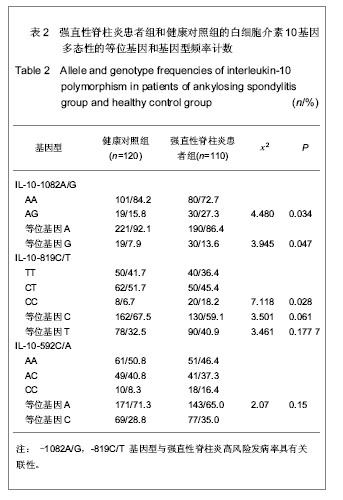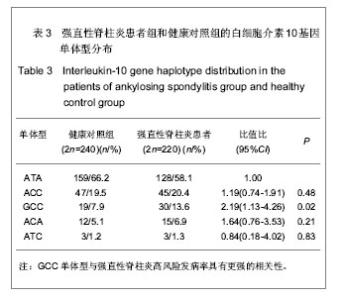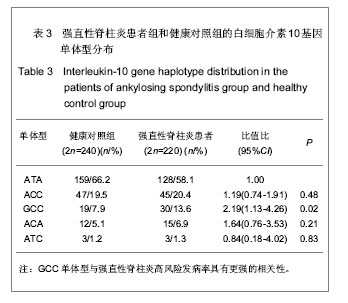| [1] Baraliakos X, Landewé R, Hermann KG,et al. Inflammation in ankylosing spondylitis: a systematic description of the extent and frequency of acute spinal changes using magnetic resonance imaging.Ann Rheum Dis. 2005;64(5):730-734.[2] Baraliakos X, Listing J, von der Recke A, et al. The natural course of radiographic progression in ankylosing spondylitis--evidence for major individual variations in a large proportion of patients.J Rheumatol. 2009;36(5):997-1002.[3] van der Linden S, van der Heijde D. Ankylosing spondylitis. Clinical features. Rheum Dis Clin North Am. 1998;24(4): 663-676, vii.[4] Braun J, Sieper J. Ankylosing spondylitis. Lancet. 2007; 369(9570):1379-1390.[5] Sieper J, Rudwaleit M, Khan MA, et al. Concepts and epidemiology of spondyloarthritis.Best Pract Res Clin Rheumatol. 2006;20(3):401-417.[6] Sieper J, Braun J, Rudwaleit M, et al. Ankylosing spondylitis: an overview.Ann Rheum Dis. 2002;61 Suppl 3:iii8-18.[7] Kobelt G, Andlin-Sobocki P, Maksymowych WP. Costs and quality of life of patients with ankylosing spondylitis in Canada. J Rheumatol. 2006;33(2):289-295.[8] Boonen A, van der Linden SM.The burden of ankylosing spondylitis. J Rheumatol Suppl. 2006;78:4-11.[9] Reveille JD.The genetic basis of ankylosing spondylitis. Curr Opin Rheumatol. 2006;18(4):332-341.[10] Brown MA, Kennedy LG, MacGregor AJ,et al. Susceptibility to ankylosing spondylitis in twins: the role of genes, HLA, and the environment. Arthritis Rheum. 1997;40(10):1823-1828.[11] Rahman P.Genetics of ankylosing spondylitis: an update.Curr Rheumatol Rep. 2007;9(5):383-389.[12] Kim TH, Stone MA, Rahman P,et al. Interleukin 1 and nuclear factor-kappaB polymorphisms in ankylosing spondylitis in Canada and Korea.J Rheumatol. 2005;32(10):1907-1910.[13] Baeten D, Van Damme N, Van den Bosch F, et al. Impaired Th1 cytokine production in spondyloarthropathy is restored by anti-TNFalpha. Ann Rheum Dis. 2001;60(8):750-755.[14] Rudwaleit M, Siegert S, Yin Z,et al. Low T cell production of TNFalpha and IFNgamma in ankylosing spondylitis: its relation to HLA-B27 and influence of the TNF-308 gene polymorphism. Ann Rheum Dis. 2001;60(1):36-42.[15] Turner DM, Williams DM, Sankaran D, et al. An investigation of polymorphism in the interleukin-10 gene promoter. Eur J Immunogenet. 1997;24(1):1-8.[16] Wilson AG, Symons JA, McDowell TL, et al. Effects of a polymorphism in the human tumor necrosis factor alpha promoter on transcriptional activation. Proc Natl Acad Sci U S A. 1997;94(7):3195-3199.[17] Kingo K, Rätsep R, Kõks S, et al. Influence of genetic polymorphisms on interleukin-10 mRNA expression and psoriasis susceptibility. J Dermatol Sci. 2005;37(2):111-113.[18] Kaluza W, Leirisalo-Repo M, Märker-Hermann E,et al. IL10.G microsatellites mark promoter haplotypes associated with protection against the development of reactive arthritis in Finnish patients. Arthritis Rheum. 2001;44(5):1209-1214.[19] Lee WY, Chang YH, Lo MK, et al. Polymorphisms of cytotoxic T lymphocyte-associated antigen-4 and cytokine genes in Taiwanese patients with ankylosing spondylitis. Tissue Antigens. 2010;75(2):119-126.[20] van der Linden S, Valkenburg HA, Cats A. Evaluation of diagnostic criteria for ankylosing spondylitis. A proposal for modification of the New York criteria. Arthritis Rheum. 1984;27(4):361-368.[21] Kozaci LD, Sari I, Alacacioglu A, et al. Evaluation of inflammation and oxidative stress in ankylosing spondylitis: a role for macrophage migration inhibitory factor. Mod Rheumatol. 2010;20(1):34-39.[22] Costa GC, da Costa Rocha MO, Moreira PR,et al. Functional IL-10 gene polymorphism is associated with Chagas disease cardiomyopathy. J Infect Dis. 2009;199(3):451-454.[23] Edwards-Smith CJ, Jonsson JR, Purdie DM, et al. Interleukin-10 promoter polymorphism predicts initial response of chronic hepatitis C to interferon alfa. Hepatology. 1999;30(2):526-530.[24] Smith JA, Märker-Hermann E, Colbert RA. Pathogenesis of ankylosing spondylitis: current concepts. Best Pract Res Clin Rheumatol. 2006;20(3):571-591.[25] Khan MA, Ball EJ. Genetic aspects of ankylosing spondylitis. Best Pract Res Clin Rheumatol. 2002;16(4):675-690.[26] Vazquez-Del Mercado M, Garcia-Gonzalez A, Muñoz-Valle JF, et al. Interleukin 1beta (IL-1beta), IL-10, tumor necrosis factor-alpha, and cellular proliferation index in peripheral blood mononuclear cells in patients with ankylosing spondylitis.J Rheumatol. 2002;29(3):522-526.[27] Goedecke V, Crane AM, Jaakkola E,et al. Interleukin 10 polymorphisms in ankylosing spondylitis. Genes Immun. 2003; 4(1):74-76.[28] Poli F, Nocco A, Berra S,et al. Allele frequencies of polymorphisms of TNFA, IL-6, IL-10 and IFNG in an Italian Caucasian population. Eur J Immunogenet. 2002;29(3): 237-240.[29] Du R,Pan SY,Lu BX. Jiepouxue Zazhi. 2006;29(6):686-689.杜冉,潘速跃,陆兵勋.中国汉族人群白细胞介素10启动子区基因多态性的等位基因频率[J].解剖学杂志,2006,29(6):686-689.[30] Sun F, Sun Y, Zhang D,et al. Association of interleukin-10 gene polymorphism with cachexia in Chinese patients with gastric cancer. Ann Clin Lab Sci. 2010;40(2):149-155.[31] Moraes MO, Santos AR, Schonkeren JJ, et al. Interleukin-10 promoter haplotypes are differently distributed in the Brazilian versus the Dutch population. Immunogenetics. 2003;54(12): 896-899.[32] Wu MS, Wu CY, Chen CJ,et al. Interleukin-10 genotypes associate with the risk of gastric carcinoma in Taiwanese Chinese. Int J Cancer. 2003;104(5):617-623. |
